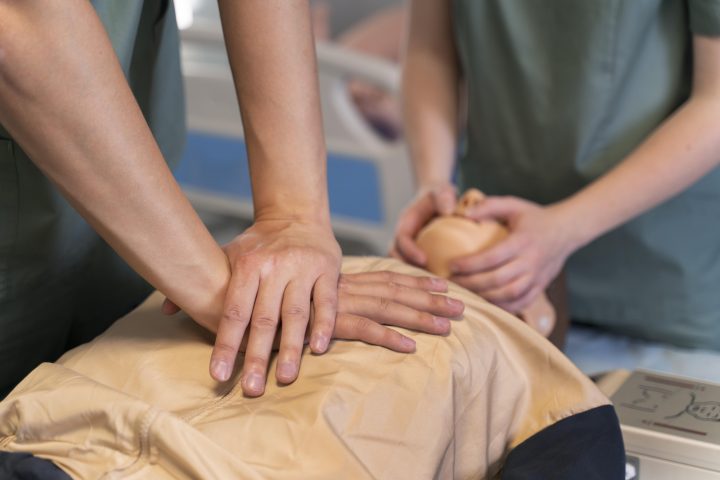Introduction
Basic Life Support (BLS) is a set of medical procedures used to help individuals experiencing life-threatening emergencies, such as cardiac arrest, choking, or respiratory distress. BLS training is essential for healthcare providers, first responders, and even the general public to ensure prompt and effective action in critical situations. This guide provides an overview of BLS, its key components, and why it’s crucial in emergency care.
Who Needs BLS Training?
BLS certification is often required for:
- Healthcare professionals (Doctors, Nurses, Paramedics, EMTs)
- First responders (Firefighters, Police Officers, Lifeguards)
- Teachers, Coaches, and Childcare Providers
- Corporate employees and general public interested in emergency preparedness
Key Components of BLS
BLS follows the Chain of Survival, a series of critical steps that improve a patient’s chance of survival. The key components include:
1. Recognizing an Emergency
- Check for responsiveness by tapping and shouting.
- Look for signs of breathing and pulse.
- Call for help and activate emergency medical services (EMS) immediately.
2. High-Quality CPR (Cardiopulmonary Resuscitation)
- Compressions: Provide 30 chest compressions at a depth of at least 2 inches for adults, at a rate of 100-120 per minute.
- Airway: Open the airway using the head-tilt, chin-lift method.
- Breathing: Deliver 2 rescue breaths after every 30 compressions.
3. Use of an Automated External Defibrillator (AED)
- Turn on the AED and follow voice instructions.
- Place the AED pads on the victim’s chest as indicated.
- Stand clear and allow the AED to analyze the heart rhythm.
- Deliver a shock if advised and immediately resume CPR.
4. Relief of Choking
- For conscious adults and children: Perform the Heimlich maneuver (abdominal thrusts).
- For unconscious individuals: Begin CPR and check for airway obstruction.
- For infants: Deliver 5 back slaps and 5 chest thrusts.
Why is BLS Training Important?
- Saves lives in emergencies like cardiac arrest and choking incidents.
- Prevents brain damage by maintaining oxygen circulation until professional help arrives.
- Boosts confidence and readiness to respond in high-stress situations.
- Required certification for many healthcare and emergency professionals.
How to Get BLS Certified?
- Enroll in an accredited BLS course (American Heart Association, Red Cross, or other recognized organizations).
- Attend hands-on training and practice CPR, AED use, and choking relief techniques.
- Pass a written and practical exam to earn your BLS certification.
- Renew certification every 2 years to stay updated on the latest guidelines.
Conclusion
BLS is a critical skill that can mean the difference between life and death in emergencies. Whether you’re a healthcare provider or a concerned citizen, knowing how to perform BLS can empower you to take immediate action when every second counts.


